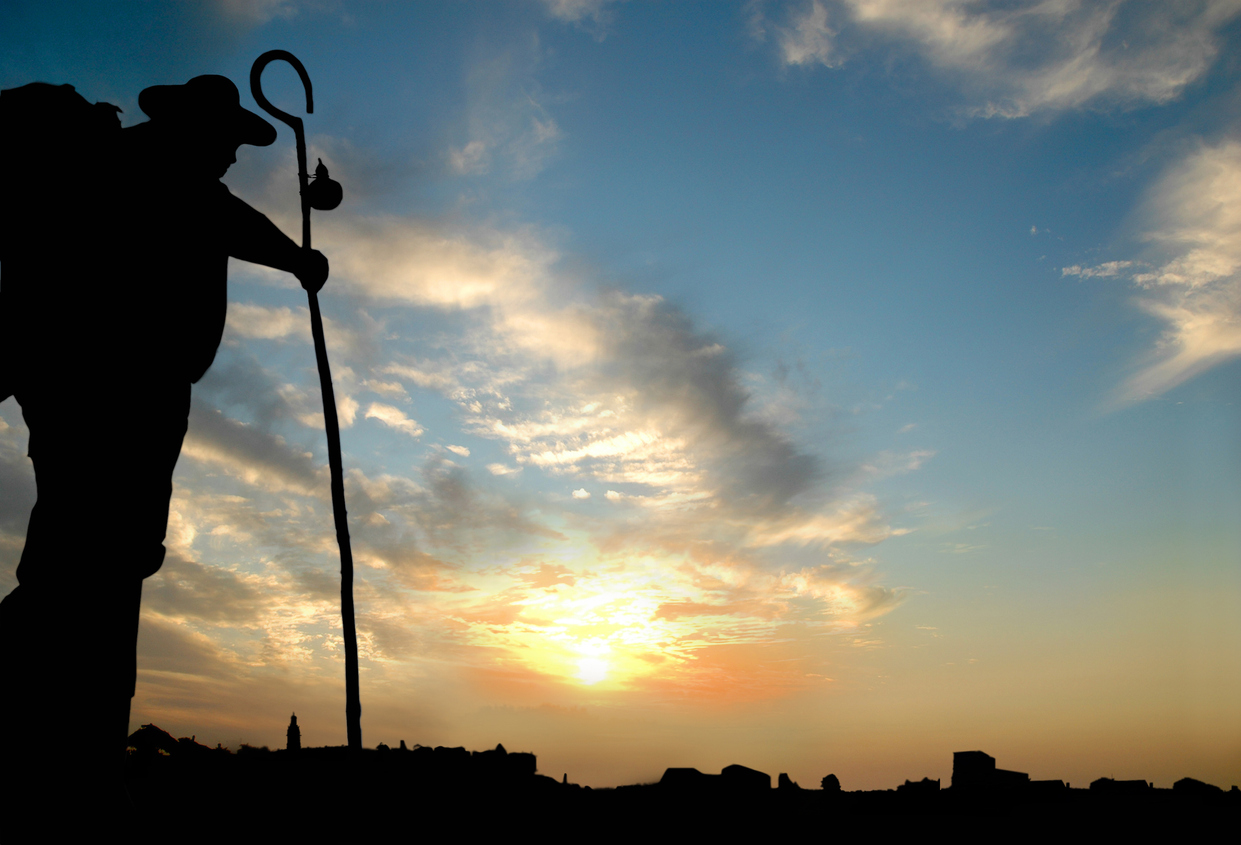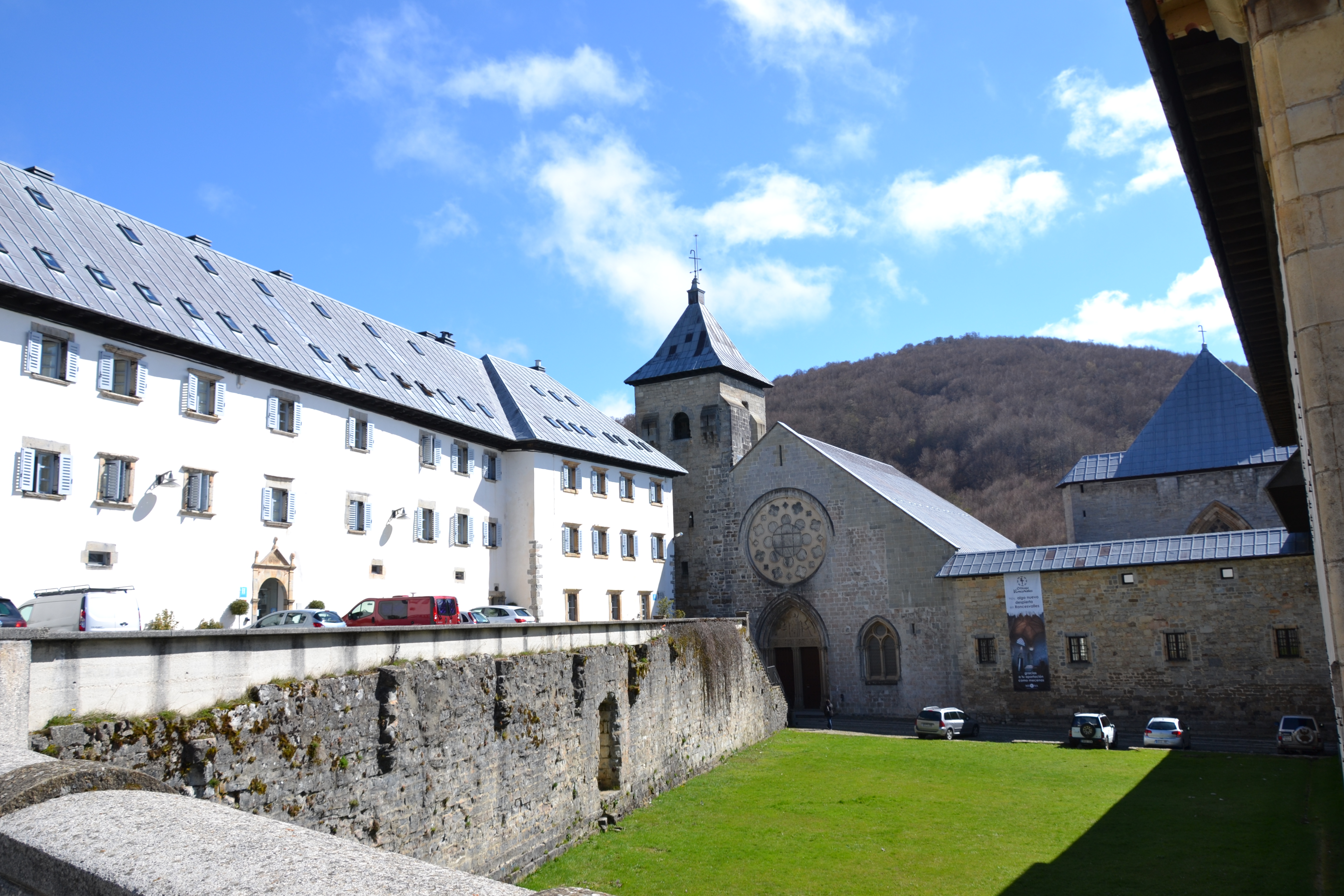 unmillondeelefantes
unmillondeelefantes
It’s that time of year again. In Spain, practically every day is the “feast day” of at least one Catholic saint. But the most famous of all is today, the Feast of Santiago (St. James the Greater), a disciple of Jesus Christ whose relics after his martyrdom tradition says were transported to Galicia (today, northwest Spain). Entombed and forgotten, they were rediscovered in the early 9th century and a cathedral was built around them, around which grew the city of Santiago de Compostela, becoming one of Christendom’s foremost pilgrimage sites, at the end of the Camino de Santiago (Way of St. James). Today on the Feast of St. James, there’s much hoopla throughout this majestic city, but throughout the year thousands of people spend weeks hiking all or just the Spanish part of this remarkable itinerary through beautiful countryside and historic towns and cities.
There are also variations in this itinerary, but 70 percent of pilgrims follow the classic Camino Francés (French Way) which starts in Navarre at the border with France. And there are dozens of stops along this route, but just to give you an idea, here’s what I think are the eight most impressive – most of them UNESCO World Heritage Sites (keep in mind that though I’ve noted distances between them, in many cases pilgrims will make one or more stops in between. And if you feel we’ve unfairly slighted any other destinations, please let us know in the comments!).
 Marianne Casamance
Marianne Casamance
Roncesvalles
This tiny hamlet (just a couple dozen inhabitants) in the Pyrenees of Navarre just across the French border bears a name that’s legendary in mediaeval history for the Battle of Roncevaux Pass in 778, when part of Charlemagne‘s army was destroyed by Basque tribes and his top knight Roland was killed. With perhaps the single loveliest setting of any site on this list, Roncesvalles’ main landmark is its 12th-century church Santa María de Orreaga, which celebrates a daily pilgrims’ mass. From here it’s 755 kilometres (469 miles) to Santiago de Compostela!
Pamplona
Next up, 47 km (29 mi.) southwest from Roncesvalles – some 8½ hours on foot – is Navarre’s capital, called Iruña in Basque and famous for its sanfermines (San Fermín festival, best known for its marquis event, the running of the bulls) every 6-14 July. Its old quarter is a compact mix of the mediaeval through Belle-Époque, with highlights including its impressive Ciudadela (citadel), a Renaissance-era fortification that’s now a park and exhibition space; the Cathedral of Santa María la Real, with a Gothic interior (including a wonderful cloister) and Neoclassical façade; and the Museo de Navarra, with archaeological, art, and ethnological exhibits housed in a 16th-century onetime hospital for pilgrims on the Camino. Have a seat at one of the classic cafés in the main square, Plaza del Castillo, and go tapas- and pub-hopping in the lively streets surrounding it, such as Calle San Nicolás, Calle San Antón, Calle Estafeta, and Calle Navarrería.
Estella
The pilgrimage continues just over 44 km (28 mi.) – about a nine-to-ten-hour walk – from Pamplona to the lovely town of Estella (known as Lizarra in Basque), founded in 1090 to attend to Camino pilgrims, and conserving a ravishing Romanesque old quarter on the Ega River, with standouts such as the churches of San Miguel and San Pedro de la Rúa as well as the two-storey Palace of the Kings of Navarre (there’s plenty of Gothic and Renaissance also sprinkled throughout). Wandering its atmospheric cobblestone streets – including a notable Judería (Jewish quarter) – as well as its arched bridge over the Ega is a truly magical experience.
Santo Domingo de la Calzada
Heading from Navarre westward into La Rioja, famous for its wines, my next favourite stop along the Camino Francés is perhaps the most famous that owes its existence to the pilgrimage (in fact, de la Calzada means “of the Way”), with roots in the 11th century (though pilgrims make various other stops along the 93km/58-mi. route, such as La Rioja capital Logroño). And to this day Santo Domingo’s old town retains much of its Middle-Ages flavour, centring around the early-13th-century Cathedral of San Salvador. In here you’ll find perhaps one of the most unusual cathedral “amenities” anywhere: an ornately tarted-up cage up on the wall near the entrance featuring two live chickens. This is a reference to the legend of a young German pilgrim unjustly hanged for theft yet who survived the ordeal, and two roasted chickens which came back to life on the local bishop’s table to mark the miracle.
Other landmarks include its thick mediaeval city walls; the Casa de la Cofradía del Santo, a Renaissance building housing the main (and modernised) pilgrims’ hostel; and the Parador de Turismo, one of Spain’s network of quasi-public inns housed mostly in historic buildings – this one a former pilgrims’ hospital built in the 12th century.
 Camino del Cid
Camino del Cid
Burgos
Another nearly 68km (42 mi.) takes us into the sprawling autonomous community of Castile-León, and this its capital is not only an important stop on the Camino but was the very heart of the historical kingdom of Castile – meaning much majestic architecture. The central pride and joy of Burgos is the Gothic Cathedral of St. Mary, built between the 13th and 15th centuries with its distinctive twin tracery spires, sculptures by reknowned artist Gil de Siloé, and tomb of the legendary knight Rodrigo Díaz de Vivar (better known as El Cid).
Other top landmark include the 12th-century Cistercian Monasterio de las Huelgas Reales – extraordinarily atmospheric, with its royal tombs, lovely cloister, and museum of mediaeval textiles (there are also still several dozen nuns in residence) – and the 15th-century Cartuja de Miraflores, one of Spain’s most important Gothic buildings, a Carthusian monastery. Pilgrims were – and are – not too pious to party, and here there’s plenty of opportunity to cut loose in various bars and venues catering to the city’s 10,000-strong student population.
León
It’s a good 174km (108 mi.) from Burgos to this, another of Castile-León’s emblematic cities, so pilgrims make several other stops along the way, in smaller places like Castrojeriz, Frómista, and Carrión de los Condes. But once they get to the onetime seat of one of Spain’s founding kingdoms, they’re inevitably wowed by its Renaissance and Romanesque landmarks, and entertained by the Barrio Húmedo (“Moist District”), the lively bar/restaurant district powered by another large student population.
The epicentre of León’s compact, UNESCO World Heritage casco antiguo (old town) is the arcade-lined Plaza Mayor, on the west side of which is the handsome, 17th-century Casa Consistorial (Old Town Hall). Nearby is another of Spain’s great cathedrals, Santa María de León, dating back to the 10th century – though what we see today is actually the third iteration, an elaborate French-Gothic-style confection (inspired, in fact, by Chartres and Reims) of the 14th and 15th centuries, with especially glorious stained-glass windows. The cathedral museum is also quite worth a look for its religious art and access to the lovely cloister. Stunning in a different way, the 11th-century Real Basílica de San Isidoro is a Romanesque masterpiece with highlights such as the Puerta del Perdón, the “Portal of Pardon” attributed to Maestro Mateo, who designed the sumptuous cathedral of Santiago de Compostela, and the Royal Pantheon, a crypt that has been dubbed the “Romanesque Sistine Chapel”, with marvelous frescoes, vaults, and columns.
No visit would be complete, either, without overnighting (or at least stopping in for a look) in the Parador de León, one of the most elaborate of Spain’s semi-publicly owned inns. Why? Because it was built as the Convento de San Marcos in the 16th century on the site of an earlier hospital and inn for Camino pilgrims. And so it presents a truly spectacular façade crammed with all manner of Plateresque frippery, along with a lovely cloister and other interior details.
Villafranca del Bierzo
Another long (117km/73-mi.) stretch westward, the last major stop on the Camino in Castile-León has always grabbed my imagination. Set amid lush, rolling countryside, Villafranca, too, grew from a long-ago Neolithic settlement into a significant place, beginning in the 9th century, as a way station on the Camino. And for a town of such small size (pop. around just 3,000), it’s exceptionally packed with atmospheric architecture – not just the churches, monasteries (a couple now housing hotels, such as the Convento de los Padres Paúles, above), and hospices you’d expect, but also the palaces and lordly mansions lining the main street Calle del Agua, along with a castle, as for various historic reasons it became a magnet for Leonese aristocrats over the centuries. One of these many churches of particular note is the 12th-century Romanesque Iglesia de Santiago Apóstol, at the entrance to the town, because of its Puerta del Perdón (Portal of Forgiveness), the only place where pilgrims could receive the same blessing offered in Santiago de Compostela itself, if they were too ill to make it the last 177km (110 mi.).
O Cebreiro
A six-hour hike (27.4km/17 mi.) west of Villafranca brings pilgrims to a small village in Galicia utterly unlike any other stop on this list. Sitting 1,300 metres (4,265 feet) up on a verdant ridge, Pedrafita do Cebreiro traces its roots to the era well before the Roman conquest of the Iberian Peninsula beginning in 218 BCE, when northern Spain was largely populated by Celtic peoples who’d originally migrated here from Central Europe. Here you can still see some of their pallozas – round stone huts with thatched roofs – some now home to an ethnographic museum and shops. In addition to local inns (such as the 9th-century San Giraldo de Aurillac) and pubs catering to pilgrims as well as locals, the main landmark here is the also 9th-century, pre-Romanesque Church of Santa María a Real.
Comments